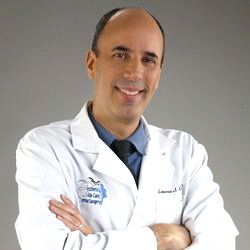- General Dermatology
- Eczema
- Chronic Hand Eczema
- Alopecia
- Aesthetics
- Vitiligo
- COVID-19
- Actinic Keratosis
- Precision Medicine and Biologics
- Rare Disease
- Wound Care
- Rosacea
- Psoriasis
- Psoriatic Arthritis
- Atopic Dermatitis
- Melasma
- NP and PA
- Skin Cancer
- Hidradenitis Suppurativa
- Drug Watch
- Pigmentary Disorders
- Acne
- Pediatric Dermatology
- Practice Management
- Prurigo Nodularis
Article
2017’s big breakthroughs
The dermatology community experienced big strides in medical and cosmetic dermatology in 2017. Dermatologists share what they think were major breakthroughs throughout the year.
The dermatology community experienced big strides in medical and cosmetic dermatology in 2017. Dermatologists share what they think were major breakthroughs throughout the year.
A new, in-office seborrheic keratosis treatment
In December 2017, Aclaris Therapeutics announced FDA approval for ESKATA (A-101) for the treatment of raised seborrheic keratoses (SKs).
It’s exciting to have a new option, which can be applied in the office, for patients with these frustrating, annoying lesions, according to dermatologist Rhonda Klein, M.D., M.P.H.

Dr. Klein“A-101 is a proprietary high-concentration 40% hydrogen-peroxide based topical solution for seborrheic keratoses, a very common skin lesion affecting more than 83 million Americans,” says Dr. Klein, who practices with Connecticut Dermatology Group and has no financial or research ties to ESKATA.
Dermatologists apply the treatment directly on the raised SK, using a pen-like applicator.
The FDA’s approval of ESKATA is based on two pivotal Phase 3 trials, in which patients received up to two treatments with ESKATA-one at the start of therapy and a second at week three. Treatment with ESKATA was generally well-tolerated and was more likely to result in complete SK clearing, compared to placebo, according to a company press release.
“It is also being studied for verruca vulgaris (warts) at a higher concentration,” Dr. Klein says.
Conflicts of interest for Dr. Klein: none.
NEXT: Siliq
Siliq’s launch
The launch of Siliq (brodalumab/Valeant Pharmaceuticals) in 2017 was a big step forward for those who suffer from severe psoriasis, says Lawrence J Green, M.D., associate clinical professor of dermatology, George Washington University School of Medicine.

Dr. Green“Being an IL-17 receptor blocker, Siliq has a different mechanism of action (than other IL-17 antagonists) that theoretically allows it to work in a more thorough way to treat hard to treat psoriatic disease,” says Dr. Green, who has no conflicts of interest on the topic. “From its uniquely rapid onset of action to its high PASI 90 and 100 scores in clinical trials, I feel Siliq is the advancement for 2017.”
But while Siliq shines for its outcomes in adults with moderate-to-severe plaque psoriasis, dermatologists who prescribe brodalumab may face a rough road, according to a July 2017 article in Dermatology Times.
NEXT: A better understanding of hyperhidrosis
A better understanding of hyperhidrosis
“I have a particular interest in hyperhidrosis, and have been treating these patients for over 20 years. What I’m most excited about for 2017 is that we were really beginning to understand more fully how prominent this condition is and just how great the impact is on the patients who suffer with it,” according to Dee Anna Glaser, M.D., professor and interim chairman of dermatology at Saint Louis University School of Medicine.
Dr. Glaser’s original paper on the topic was published in 2004.

Dr. Glaser“We surveyed 1,500 people and found out that the prevalence was around 2.8 percent. That didn’t really match up to what was being reported in other countries, like in Canada, Europe and Asia,” she says. “Another study we did more recently, which was published in 2016, showed that it was closer to 5 percent, at about 4.8 percent prevalence. And that really aligns with what other metropolitan areas in other countries, on other continents, have been describing.”
Dr. Glaser and colleagues also found that sweating symptom severity does not improve with age. Rather it stays constant or get worse and bothers people throughout the year.
The U.S. research, she says, suggests years of underestimating the impact of hyperhidrosis.
“That’s important because a lot of insurance companies have been denying this because they thought it was a small problem…,” she says. “We’re really understanding more and more the impact it can have on the productivity and quality of life for people who have this condition. Basically, the new data shows (and confirms some older data) that it impacts every aspect of people’s lives.”
In 2004, Dr. Glaser and colleagues found that only about a third of patients who identified themselves as having excessive sweating had ever seen or talked with a healthcare professional, including a pharmacist, nurse, physician, physician assistant, etc. In 2017, only about half of people studied had discussed their concerns with a healthcare provider, she says.
In November 2017, Dr. Glaser, who is president of the International hyperhidrosis Society, took part of a patient-focused drug development seminar related on hyperhidrosis with the FDA.
“The FDA was actually very interested in trying to understand what the needs are to get [patients] more help because there really has been a limited number of FDA-approved treatments,” she says.
Current hyperhidrosis treatments are limited and include: Botox (Allergan) treatments, which are FDA-approved for axillary hyperhidrosis; MiraDry (Miramar Labs), which has an FDA indication as a device for axillary hyperhidrosis; the iontophoresis machine, which also has an FDA indication to the specific use; or to topically apply aluminum chloride.
Conflicts of interest: Dr. Glaser has research grants with Dermira, Allergan, Sienna. She serves on the advisory boards for Dermira, Allergan, Galderma, Merz and Brickell.
NEXT: Tattoo removal
Target: Tattoo
University of Missouri researchers published important work in 2017, ushering advancements to minimally invasive laser-based treatments, including tattoo removal, says New York City-based dermatologist Margarita Lolis, M.D.

Dr. Lolis“The problem was that getting lasers to target the specific area of a tattoo and then have it be absorbed was a challenge. The progress has been in the instruments used to administer the lasers allowing the laser light [to] penetrate into the tissue through direct contact. This addresses safety concerns, and new instruments will allow more dermatologists to meet the high demand of patients seeking tattoo removal into 2018 and beyond,” Dr. Lolis says.
University of Missouri researchers use ultrasonic pulsation, along with a clinical laser, to alter the properties of skin tissue during the procedure.
“They tested the ‘sonoillumination’ method on porcine skin tissue samples, which most closely resemble that of human skin and results were excellent. In April of 2017, the technique was presented at the annual conference of American Society for Laser Medicine and Surgery (ASLMS),” Dr. Lolis says. “This advancement will be great for lasers across the board.”
For more on that, see this press release from the University of Missouri: http://munews.missouri.edu/news-releases/2017/0410-laser-based-dermatological-procedures-could-be-revolutionized-with-new-technique/.
Conflicts of interest for Dr. Lolis: none.
NEXT: At-home devices
At-home device innovations

Dr. Batra“The biggest breakthrough in 2017, I think is the real innovation that has occurred in some of the at-home products and devices,” says Sonia Batra, M.D., a dermatologist in private practice in Santa Monica, Calif., and a recurring co-host on the talk show The Doctors.
The two categories of at-home devices in which Dr. Batra says she has seen a lot of progress are light-emitting diode (LED) and laser therapy.
“The wavelengths are similar to those used in the office but at much lower energy levels that are safe for at-home use. Microcurrent devices that provide a temporary lift have also progressed,” she says.
At-home devices don’t necessarily mean lost business for the dermatologist, according to Dr. Batra.
“I think, with everything we do in the office, we’re always trying to dovetail with a really effective at-home regimen. It has been a nice partnership that the products at home are becoming more and more sophisticated and effective,” she says.
Still, consumer beware of me-too devices that over promise and under deliver, according to Dr. Batra.
“Obviously, there were some first-to-market at-home hair removal devices. There were some diode type devices, which are LED lights for acne and antiaging. And I think, because of the commercial success of many of those devices, there have been more and more at-home products hitting the market,” she says. “They vary in terms of their effectiveness.”
NEXT: Topical HA
Thumbs up for topical HA
In 2017, dermatologists and their patients saw hyaluronic acid being marketed as an ingredient in moisturizers, as well as topical fillers.
“Hyaluronic acid has been a darling in dermatology for some time. As most dermatologists know, it’s a water-absorbing molecule. It’s a hydrating agent. And we also use hyaluronic acid in injectable forms in fillers,” Dr. Batra says. “In 2017, I think there were some innovative products that merged those applications. They’re sort of misleading being marketed as ‘topical fillers.’ They’re really just much more sophisticated versions of hyaluronic acid, which people can apply to plump lines.”
Instant gratification with topical polymers
Use of topical polymers, which instantly give a firming effect to the skin, blossomed in 2017, according to Dr. Batra.
“I’ve had people come in with, for example, Instantly Ageless, which is basically a temporary tightening agent, which you put on your face and get a short-lived but quite impressive effect,” she says. “I think it’s quite cool to see the technology that’s coming through that’s being translated into topical skin care.”
Conflicts of interest: Dr. Batra is a medical advisor for Jenu, which is an at-home ultrasound device that increases absorption of product, as well as for Keranique, which is the hair regrowth system for women. She has consulted with ProActive and Neutrogena.
NEXT: Epidermolysis bullosa
Hope for severe epidermolysis bullosa
European researchers authored a study in Nature published November 2017 documenting how autologous transgenic keratinocyte cultures regenerated an entire fully functional epidermis on a seven-year-old with junctional epidermolysis bullosa.
The study, the authors write, “…provides a blueprint that can be applied to other stem cell-mediated combined ex vivo cell and gene therapies.”
One of the authors, Michele De Luca, a regenerative medicine specialist at the University of Modena and Reggio Emilia in Italy, previously performed two proof-of-principle transgenic cell therapies on epidermolysis bullosa patients, but only on small areas of replacement epidermis, according to a recent article in The Scientist.
The treatment by Dr. De Luca in the Nature article was on about 80 percent of the boy’s epidermis.
Dr. De Luca told The Scientist that the boy receives regular checkups to assess for any problems, but, as of early November, he was back at school, exercising and has started to play soccer.
“This news is terribly exciting-the best news we’ve had for epidermolysis bullosa community in a long, long time,” says Harper Price, M.D., a pediatric dermatologist at Phoenix Children’s Hospital, Phoenix, Ariz., who was not an author of the study.
Stay tuned for more on this work and research like it going on in the U.S. in the February issue of Dermatology Times.





